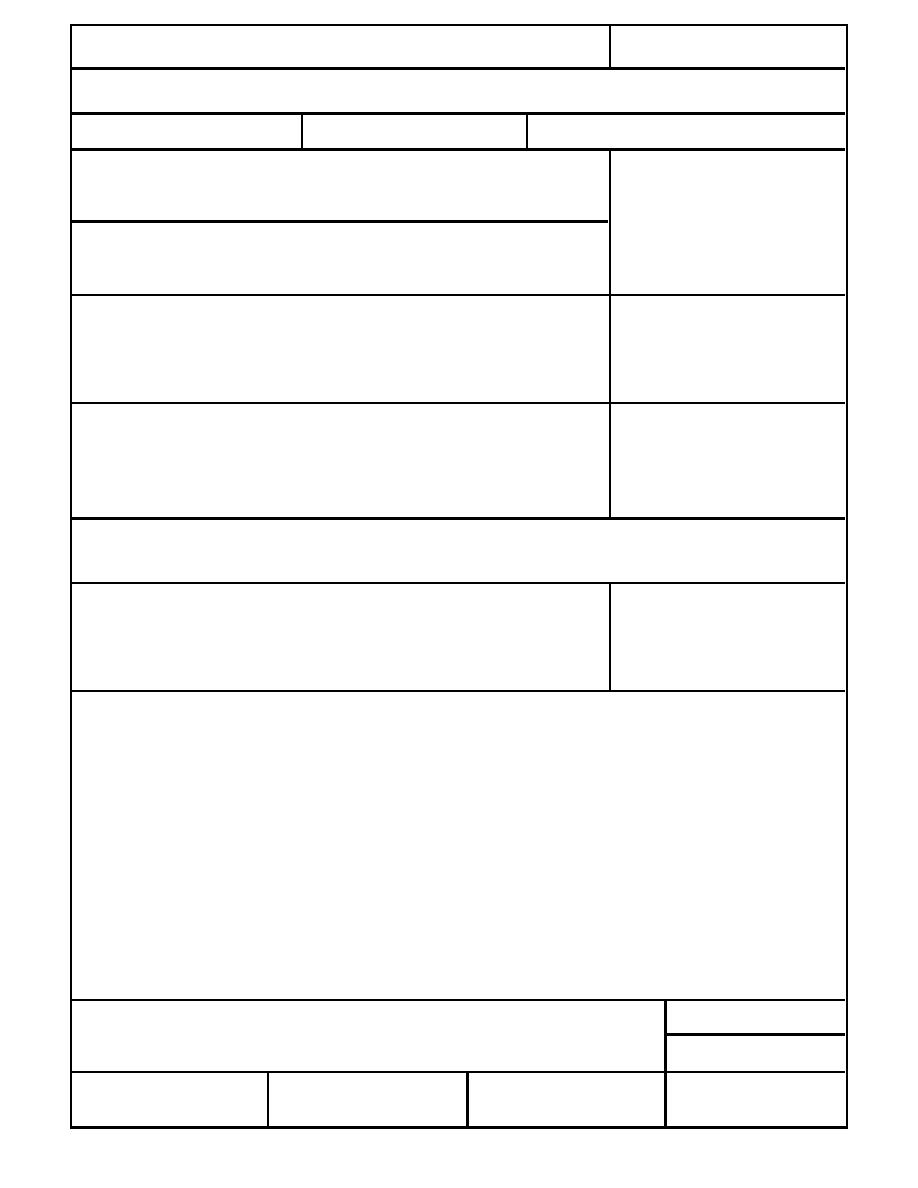
Form Approved
REPORT DOCUMENTATION PAGE
OMB No. 0704-0188
Public reporting burden for this collection of information is estimated to average 1 hour per response, including the time for reviewing instructions, searching existing data sources, gathering and
maintaining the data needed, and completing and reviewing the collection of information. Send comments regarding this burden estimate or any other aspect of this collection of information,
including suggestion for reducing this burden, to Washington Headquarters Services, Directorate for Information Operations and Reports, 1215 Jefferson Davis Highway, Suite 1204, Arlington,
VA 22202-4302, and to the Office of Management and Budget, Paperwork Reduction Project (0704-0188), Washington, DC 20503.
1. AGENCY USE ONLY (Leave blank)
2. REPORT DATE
3. REPORT TYPE AND DATES COVERED
October 1997
4. TITLE AND SUBTITLE
5. FUNDING NUMBERS
Antifreeze Admixtures for Concrete
USACE
Construction Productivity
Advancement (CPAR)
6. AUTHORS
Research Program
Charles J. Korhonen, Edel R. Cortez, Timothy A. Durning, and
Ara A. Jeknavorian
7. PERFORMING ORGANIZATION NAME(S) AND ADDRESS(ES)
8. PERFORMING ORGANIZATION
REPORT NUMBER
U.S. Army Cold Regions Research and Engineering Laboratory
72 Lyme Road
Special Report 97-26
Hanover, New Hampshire 03755-1290
9. SPONSORING/MONITORING AGENCY NAME(S) AND ADDRESS(ES)
10. SPONSORING/MONITORING
AGENCY REPORT NUMBER
Office of the Chief of Engineers
Washington, D.C. 20314-1000
11. SUPPLEMENTARY NOTES
For conversion of SI units to non-SI units of measurement consult ASTM Standard E380-93, Standard Practice for Use of the
International System of Units, published by the American Society for Testing and Materials, 1916 Race St., Philadelphia, Pa.
19103.
12a. DISTRIBUTION/AVAILABILITY STATEMENT
12b. DISTRIBUTION CODE
Approved for public release; distribution is unlimited.
Available from NTIS, Springfield, Virginia 22161
13. ABSTRACT (Maximum 200 words)
The goal of this project was to develop a chemical admixture that would reduce the need for wintertime thermal
protection of freshly placed concrete. Chemicals were investigated for their ability to promote strength gain in
concrete cured below 0C. The project was carried out in five phases. Phase 1 evaluated existing and new
admixtures. Phase 2 measured the effect of promising chemicals on concrete properties. Phases 3 and 4 tested the
practicality of using the new technology/admixture in the field. Phase 5 disseminated the findings through an
Army conference and through the development of this report, in addition to normal W.R. Grace advertising
channels. Laboratory strength tests established that two prototype admixtures were capable of protecting
concrete down to 5C. Results from other laboratory tests show that the chemicals pose no harm to the concrete
or embedded ferrous metals. Concrete containing the prototype admixtures passes standard freezethaw tests,
does not shrink unusually, does not contain harmful alkalis, and does not produce irregular hydration products.
Field tests clearly demonstrated that working with these new admixtures requires no new skills. The concrete
can be mixed at lower temperatures, saving energy. The admixtures are easily dosed into the mixing trucks, as is
normal practice today, and concrete is finished in the usual manner. Estimates show that the two prototype
admixtures can extend the construction season by as much as three months in the contiguous United States. The
prototype has proved that low-temperature admixtures are possible. The industry partner sees the need to
develop admixtures that will work to 10C before going commercial with this technology.
14. SUBJECT TERMS
15. NUMBER OF PAGES
54
Antifreeze admixtures, Cold concrete, Cold regions construction, Cold weather
concrete, Concrete admixtures, Freeze-point depression, Low-temperature strength,
16. PRICE CODE
Thermal protection, Winter construction
17. SECURITY CLASSIFICATION
18. SECURITY CLASSIFICATION
19. SECURITY CLASSIFICATION
20. LIMITATION OF ABSTRACT
OF REPORT
OF THIS PAGE
OF ABSTRACT
UNCLASSIFIED
UNCLASSIFIED
UNCLASSIFIED
UL
Standard Form 298 (Rev. 2-89)
NSN 7540-01-280-5500
Prescribed by ANSI Std. Z39-18
298-102



 Previous Page
Previous Page
